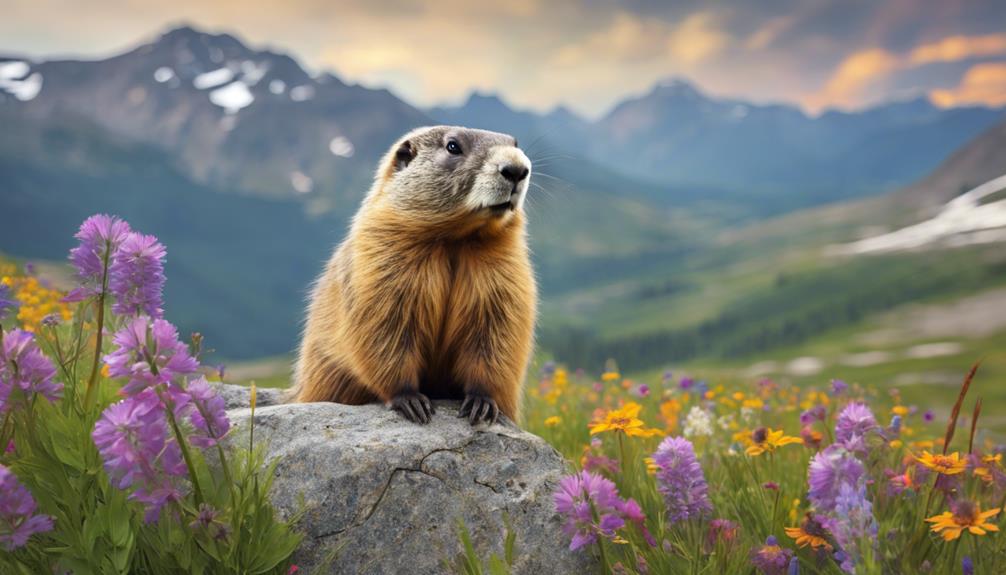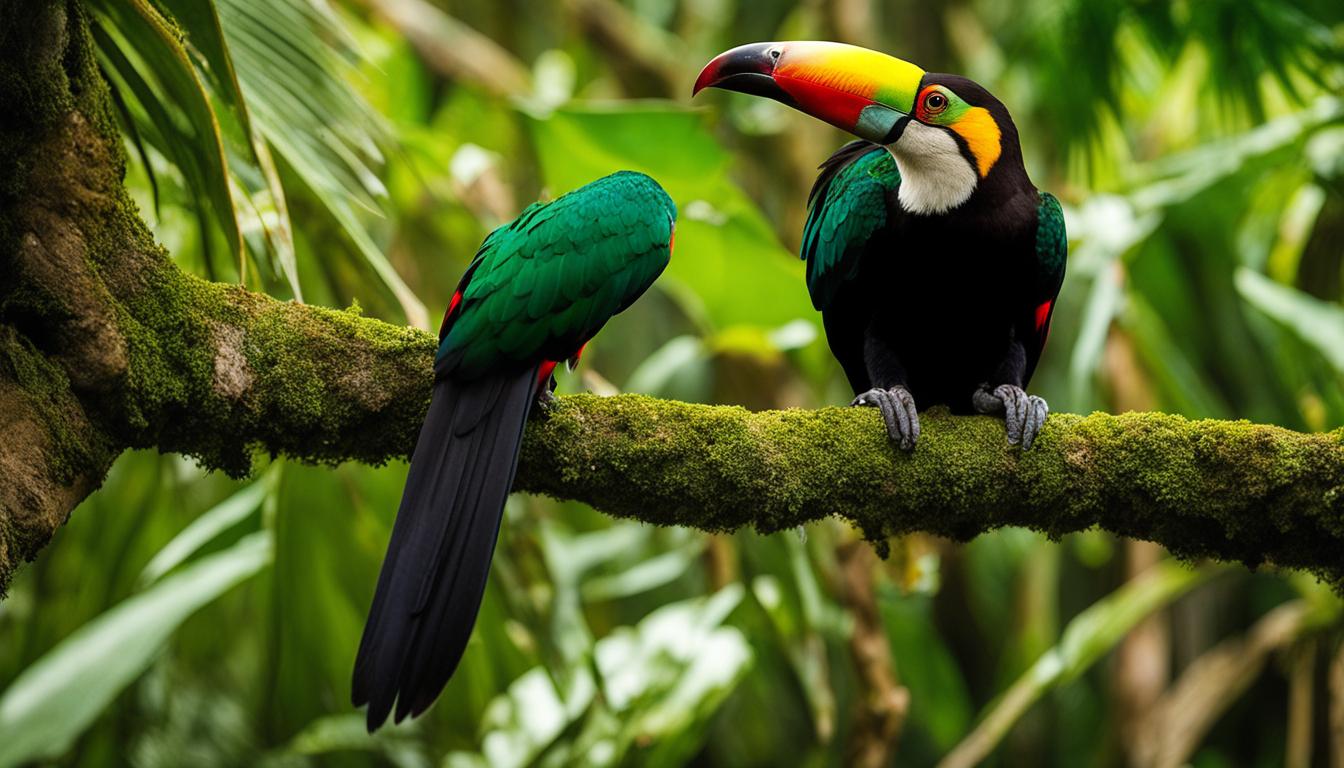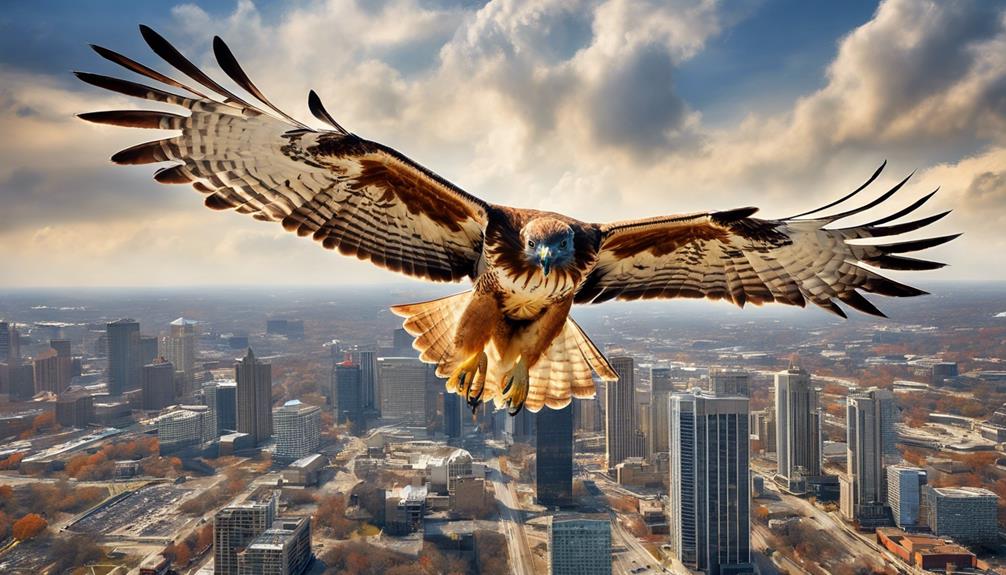Curious about animals like squirrels? Learn about chipmunks, ground squirrels, flying squirrels, marmots, prairie dogs, tree squirrels, and antelope squirrels. Chipmunks and flying squirrels are active during the day, while ground squirrels and marmots burrow underground. Prairie dogs and ground squirrels have excellent communication skills, while tree squirrels and antelope squirrels are skilled climbers. Flying squirrels and tree squirrels prefer habitats up high, showcasing diverse adaptations. These creatures provide interesting similarities and differences within the rodent family.
Key Takeaways
- Flying squirrels are nocturnal gliders like squirrels, adapted for arboreal life.
- Marmots, large ground squirrels, exhibit burrowing habits and herbivorous diets.
- Chipmunks, with cheek pouches for food storage, are ground-dwelling rodents.
- Ground squirrels are skilled burrowers and communicators, similar to chipmunks.
- Antelope squirrels, with speed and adaptability, thrive in arid environments like ground squirrels.
Chipmunks
Chipmunks, small striped rodents from the Sciuridae family, are known for their distinctive stripes running from head to tail. These enchanting creatures possess cheek pouches that they use to store and transport food, allowing them to hoard supplies for the winter months efficiently.
As herbivores, chipmunks have a diet rich in nuts, seeds, fruits, and insects, showcasing their diverse palate and adaptability in foraging. Their diurnal nature sets them apart as creatures of the day, being most active when the sun is shining bright. This behavior gives observers ample opportunities to witness their playful antics and resourceful hoarding habits.
Chipmunks' small size, striped patterns, and fascinating lifestyle make them intriguing subjects for nature enthusiasts and researchers alike. Studying these mesmerizing creatures can provide valuable insights into the delicate balance of ecosystems and the unique adaptations that help small animals thrive in diverse environments.
Ground Squirrels

Living mainly underground, ground squirrels have developed specialized adaptations for burrowing and thriving in subterranean habitats. These creatures are fascinating in their behaviors and abilities. Here are four intriguing aspects of ground squirrels:
- Burrows: Ground squirrels are experts at creating intricate burrow systems underground, providing safety from predators and extreme weather conditions.
- Diurnal Lifestyle: Unlike their nocturnal counterparts, ground squirrels are diurnal, meaning they're most active during the day, making them a delight to observe in their natural habitat.
- Communication: These squirrels engage in sophisticated communication through various vocalizations, allowing them to convey messages and warnings effectively within their social groups.
- Climbers: Some ground squirrel species, like the California ground squirrel, exhibit impressive climbing skills, adapting to diverse environments beyond just their burrowed homes.
The world of ground squirrels is a blend of innovation and adaptation, showcasing their remarkable survival strategies and social dynamics.
Flying Squirrels

Flying squirrels, with their unique ability to glide through the air, captivate with their nocturnal acrobatics and keen vision in low light conditions. These remarkable creatures have a membrane that stretches between their front and rear legs, allowing them to soar gracefully from tree to tree. Found in forests, flying squirrels make use of their acrobatic abilities to navigate the canopy efficiently, especially during twilight hours when they are most active.
To better understand the fascinating world of flying squirrels, let's take a closer look at some key facts about these incredible animals:
| Fact | Description |
|---|---|
| Glide | Flying squirrels can glide for impressive distances thanks to their membrane. |
| Nocturnal | These squirrels are primarily active during the night and at twilight. |
| Acrobatic Abilities | Known for their agile movements, flying squirrels showcase impressive acrobatics. |
| Forests | They inhabit forests, utilizing their gliding skills to move efficiently through the trees. |
| Twilight | Flying squirrels' keen vision in low light conditions aids them during their nocturnal adventures. |
Flying squirrels truly embody the wonders of nature, blending grace, agility, and adaptability in perfect harmony.
Marmots

Marmots, like me, prefer to burrow underground for shelter and protection from predators. Their burrowing habits are essential for creating safe spaces where they can hibernate and raise their young.
Additionally, marmots primarily feed on vegetation, such as grasses, herbs, and flowers, making their diet preferences quite similar to those of other squirrel species.
Marmots Burrowing Habits
Known for their intricate burrowing habits, marmots are large ground squirrels that create complex underground systems for shelter and protection. These burrow systems are fascinating in their design and functionality. Here are four key points to ponder:
- Marmot burrows can have multiple entrances, ensuring quick escape routes.
- The chambers within these burrows serve different purposes like nesting and food storage.
- The burrows provide excellent insulation, keeping marmots warm during cold seasons.
- Predators and harsh weather are no match for the safety these burrows offer.
Understanding marmots' burrowing habits sheds light on their remarkable adaptability and survival strategies.
Next, let's explore their dietary preferences to complete the picture of these intriguing creatures.
Marmots Diet Preferences
Having explored marmots' intricate burrowing habits, let's now investigate their dietary preferences.
Marmots, as herbivores, primarily feast on grasses, leaves, herbs, and flowers. Their diet is high in fiber, aiding digestion and supporting their herbivorous nature. Occasionally, they may include fruits, seeds, and even insects in their meals.
Marmots are selective feeders, meticulously choosing plant materials rich in nutrients to meet their energy requirements. Foraging extensively, these rodents scour their habitats for the most nutritionally valuable options. By focusing on a diet abundant in vegetation, marmots make certain they acquire the necessary sustenance for their survival.
Their dietary habits showcase their adaptation as herbivorous, high-fiber consumers and selective feeders in the animal kingdom.
Prairie Dogs

Burrowing underground in vast colonies known as 'towns', prairie dogs are highly social rodents closely related to squirrels and chipmunks. These burrowing rodents are fascinating creatures that play an essential role in the grassland ecosystems they call home.
Here are some intriguing facts about prairie dogs:
- Social Creatures: Prairie dogs are incredibly social animals, living in tight-knit communities where they communicate through a complex system of vocalizations, including distinct barks to warn others of potential threats.
- Keystone Species: As a keystone species, prairie dogs have a significant impact on their ecosystem. Their burrowing activities create habitat diversity and enhance soil fertility, influencing the abundance and diversity of other species in their environment.
- Grassland Ecosystems: Prairie dogs are essential for maintaining the health of grassland ecosystems, as their presence helps regulate plant growth, prevent wildfires, and support a variety of other wildlife species.
- Underground Colonies: These rodents create intricate underground colonies that can house hundreds of individuals, showcasing their impressive organizational skills and cooperative behaviors.
Tree Squirrels

Tree squirrels, such as the Abert's and Fox Squirrels, are fascinating creatures that thrive in wooded environments. They're adept climbers, gracefully moving through the treetops with their keen eyesight and bushy tails aiding in balance.
Observing their habitat preferences and behavioral adaptations offers valuable insights into the natural world and the interconnectedness of ecosystems.
Habitat Preferences
Nestled among the lush canopies of forests, woodlands, and urban parks, tree squirrels prefer habitats abundant with towering trees for their nesting needs.
The rustling leaves provide a comforting backdrop for these agile creatures.
The dappled sunlight filters through the branches, creating the perfect playground for their acrobatic feats.
The gentle swaying of the branches lulls them to sleep in their cozy dreys high above the ground.
The bustling sounds of the forest offer a symphony of communication, where bushy tails flicker in unison, signaling their presence.
In this vibrant ecosystem, tree squirrels thrive, utilizing their natural talents for climbing and their unique means of communication through their expressive tails.
Behavioral Adaptations
Among the canopy dwellers, tree squirrels showcase remarkable behavioral adaptations that aid in their survival and navigation within their arboreal habitats. With excellent vision and depth perception, tree squirrels skillfully maneuver through tree branches and detect potential threats.
Their strong hind legs enable impressive leaps between trees and agile movements on branches, essential for escaping danger. Using their bushy tails for balance while climbing, tree squirrels also employ them as a signaling mechanism to communicate with other squirrels.
Exhibiting territorial behavior, they mark boundaries with scent glands and vocalizations to deter intruders. Constructing nests called dreys in tree cavities or leafy treetops, these structures provide shelter and protection from harsh weather, showcasing the resourcefulness of tree squirrels in adapting to their environment.
Antelope Squirrels

Antelope squirrels, with their distinctive white stripes and remarkable agility, are small ground squirrels commonly found in the southwestern United States and Mexico. These agile creatures are fascinating to observe for several reasons:
- Speed: Antelope squirrels are known for their incredible speed, darting swiftly through the desert landscape to evade predators and capture their prey.
- Adaptability: Thriving in arid environments, these squirrels showcase impressive adaptability, feeding on a variety of seeds, fruits, and insects to sustain themselves.
- Distinctive Appearance: Their striking white stripes and eye-ring set them apart from other ground squirrels, making them easily recognizable in their habitats.
- Burrow Dwellers: Antelope squirrels are adept at creating and utilizing burrows, where they seek refuge from the scorching desert heat and raise their young in safety.
Observing these unique behaviors and characteristics of antelope squirrels provides valuable insights into the diverse adaptations of wildlife in the southwestern United States and Mexico.
Frequently Asked Questions
What Animal Is Similar to Squirrel?
A chipmunk shares similarities with squirrels in appearance and behavior. Both belong to the same family, exhibit agility and climbing skills, and play a role in seed dispersal. Chipmunks, like squirrels, are important for ecosystem balance.
What Is the Closest Pet to a Squirrel?
The closest pet to a squirrel is a pet chipmunk. Chipmunks are similar to squirrels in behavior and care needs. They are playful, curious, and need a spacious enclosure for climbing and foraging.
What Are Squirrels Most Closely Related To?
Squirrels are most closely related to chipmunks, prairie dogs, and marmots within the Sciuridae family. We share common ancestry and belong to the same rodent family. Understanding this history explains our similar traits and behaviors.
What Animals Are in the Same Family as Squirrels?
In the same family as squirrels, you'll find diverse creatures like chipmunks, prairie dogs, and marmots. With over 280 species worldwide, we're talking about a bustling Sciuridae family, each member bringing its unique charm to the wildlife party.
What Animals Similar to Squirrels Can Be Found in Atlanta?
Atlanta is home to a variety of fascinating wildlife species, including animals similar to squirrels. Some of the creatures you might encounter in Atlanta include chipmunks, groundhogs, and flying squirrels. These fascinating Atlanta wildlife species can be found in parks, forests, and even urban areas throughout the city.
Conclusion
To sum up, when it comes to animals similar to squirrels, there are a variety of species to explore. From chipmunks and ground squirrels to flying squirrels and prairie dogs, each animal has its own unique characteristics and behaviors.
By learning more about these creatures, we can gain a greater understanding of the diversity of wildlife in our world. So next time you see a furry critter scurrying about, take a moment to appreciate the fascinating world of small mammals around us.










